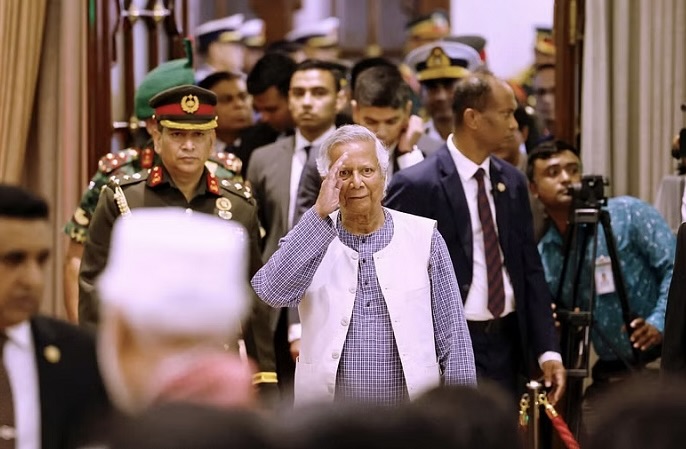A Bengal-Mexico parallel?
The ghastly events in West Bengal reflect a state of helpless residents, run by an apathetic government actively sheltering anti-India migrants, and running Mexico-style narco-criminal syndicates.
 Courtesy:
Courtesy:
The ghastly events in West Bengal reflect a state of helpless residents, run by an apathetic government actively sheltering anti-India migrants, and running Mexico-style narco-criminal syndicates.
 Courtesy:
Courtesy:
The India-Australia bilateral is one of the most promising new partnerships within India’s circle of trusted countries. It is multi-dimensional and modern, ranging from enhanced people-to-people ties, to deepening government engagement, to futuristic technology and digital services. The free trade agreement can be a model for others seeking similar ties with India.
 Courtesy:
Courtesy:
The events of August 5 turned Bangladesh from a development model to unstable entity. A variety of players have been stirring trouble in the country, from within and without. Great powers and neighbours, NGOs and the diaspora, Islamist groups and armed forces. All these are entangled in the U.S.-China geopolitical rivalry that Bangladesh seems to be caught in.
 Courtesy:
Courtesy:
Bangladesh’s economy has been in distress for some time and is not doing as well as assumed. This could have been one of the factors that drove the protests and the subsequent coup.
 Courtesy: FinShots
Courtesy: FinShots
The term Global South is no less ambiguous today than when it first originated in the 1960s. This time though, it is a big tent that accommodates all non-West aspirations, from the G77 to the Non-Aligned Movement to the Third World. It is a geopolitical fact rather than a geographical demarcation whose appeal lies in its ability to get to the heart of shared priorities and goals.
 Courtesy:
Courtesy:
Bangladesh Prime Minister Sheikh Hasina's forced resignation on August 5 came amidst prolonged and violent anti-government protests. Lt Gel S L Narasimhan, the Adjunct Distinguished Fellow for China and National Security Studies, Gateway House, analyzes the role of the army and external actors, and the strategic and security implications for India.
 Courtesy:
Courtesy:
The Quad foreign ministers meeting, held in Tokyo on July 29, took a clear position against China’s coercive actions in the East and South China seas. The four ministers have done their bit by reviewing the progress of the grouping’s many initiatives and reiterating its commitment to a free and open Indo-Pacific. For continued progress, the Quad now needs solid initiative from the top leadership – and a summit at the earliest.
 Courtesy:
Courtesy:
A timely book on the Naga contribution to Allied victory in the Second World War is a necessary documentation. Northeast India was the eastern flank of the British empire where the battles of Kohima and Imphal stopped Japan’s invasion into India. While western historical narratives are being reiterated during the war’s 80th anniversary, the role and sacrifice of the Nagas is a neglected but important counterpoint.
 Courtesy:
Courtesy:
China and India both give great importance to their neighbours – the former through its Friendly Neighbourhood policy, the latter through Neighbourhood First. Although China has been increasing its influence in the region, narratives that say that India is losing out to China lack in-depth analysis. To deduce the future trajectory of China in South Asia, it is important to study both China’s and India’s relations with each of these countries, as also with each other.
 Courtesy:
Courtesy:
The last two weeks have been turbulent for U.S. politics: a past President and current candidate survives an assassination attempt; the current President is forced to withdraw from contesting and is replaced by a new nominee in a flash. This is set in the backdrop of tumultuous domestic and international politics. Neelam Deo, co-founder, Gateway House, discusses the U.S.’ electoral race and its implications for global geopolitics.